| |
|

This is where I'm posting links to articles on Jin Shin Jyutsu®, CFT,
massage, wellness, as well as tips for general health, stretching, and
more. There are also links to other providers and money-saving health
tips. Just look at the posts, categories, and links on the right.
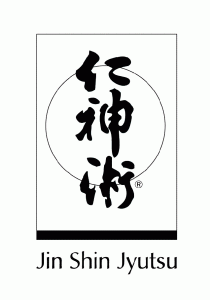 This new study is exciting news for the Jin Shin Jyutsu community, in that it is part of the trend of increasing acceptance of JSJ in the clinical field. The Kentucky Markey Center (Lexington, KY), which published the study, alongside with the Memorial Hospital (Morristown, NJ), the California Pacific Medical Center (San Francisco, CA) , and the Kaiser Permanente Northwest Center for Health Research (Portland, OR), are all hospitals and facilities who have integrated Jin Shin Jyutsu into their cancer care programs. This new study is exciting news for the Jin Shin Jyutsu community, in that it is part of the trend of increasing acceptance of JSJ in the clinical field. The Kentucky Markey Center (Lexington, KY), which published the study, alongside with the Memorial Hospital (Morristown, NJ), the California Pacific Medical Center (San Francisco, CA) , and the Kaiser Permanente Northwest Center for Health Research (Portland, OR), are all hospitals and facilities who have integrated Jin Shin Jyutsu into their cancer care programs.
“It was interesting to note that regardless of age, sex or diagnosis, cancer patients received a statistically significant improvement in the side effects from treatment,” study researcher Jennifer Bradley, a Jin Shin Jyutsu integrative practitioner at the University of Kentucky Markey Cancer Center, said in a statement. “It is encouraging to note that Jin Shin Jyutsu made improvements in these areas without adding additional unwanted effects that so often occur with medication interventions.”
The study included 159 people with cancer. They all received Jin Shin Jyutsu, and then were asked after the session to rate their nausea, stress and pain on a 10-point scale. Generally, the touch therapy was linked with a 2- to 3-point reduction in scores for pain and nausea, researchers found.
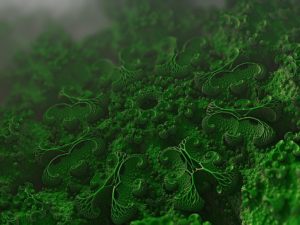 For any of us who still believe that humans can keep themselves separate from nature (or the universe) and the consequences that follow, the recent publication of the gene map of the body’s microbes may help to open your mind. Apparently, non-human microorganisms outnumber our own cells by a factor of 10 to 1! Here’s a brief summary of the WSJ article: For any of us who still believe that humans can keep themselves separate from nature (or the universe) and the consequences that follow, the recent publication of the gene map of the body’s microbes may help to open your mind. Apparently, non-human microorganisms outnumber our own cells by a factor of 10 to 1! Here’s a brief summary of the WSJ article:
Researchers said Wednesday they have produced the first comprehensive genetic map of the microbes that live in or on a healthy human body, laying the groundwork for possible new advances in research and in the diagnosis and treatment of disease.
The accomplishmentâthe result of a five-year, $173 million initiative called the Human Microbiome Project funded by the National Institutes of Healthâstems from an effort to better understand bacteria and other organisms that play a critical role in processes ranging from digestion to infection. “Most of the time we live in harmony” with them,” said Eric Green, director of the National Human Genome Research Institute. They play critical roles in digestion and other processes important for human survival. But sometimes, the beneficial relationship breaks down, resulting in disease. “We need to understand better what the normal microbiome is like and what happens to it when it changes to cause or influence disease,” Dr. Green said.
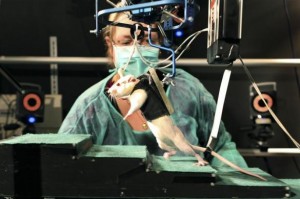 In a surprising development, research at the Swiss Federal Institute of Technology shows that a combination of the human body’s astounding capacity to heal itself and modern-medicine neurological stimuli may bring new hope for future rehabilitation in humans with severe spinal cord injuries. In a surprising development, research at the Swiss Federal Institute of Technology shows that a combination of the human body’s astounding capacity to heal itself and modern-medicine neurological stimuli may bring new hope for future rehabilitation in humans with severe spinal cord injuries.
This photo provided by the Swiss Federal Institute of Technology (EPFL) on May 31, 2012, shows a researcher observing a rat walking on its hind legs during an experiment at the Center for Neuroprosthetics and Brain Mind Institute in Ecublens. Rats with spinal cord injuries and severe paralysis are now walking thanks to researchers lead by Professor Gregoire Courtine at EPFL. Published in the June 1, 2012 issue of ‘Science’ magazine, the results show that a severed section of the spinal cord can make a comeback when its own innate intelligence and regenerative capacity is awakened. According to Gregoire Courtine, it is yet unclear if similar rehabilitation techniques could work for humans, but the observed nerve growth hints at new methods for treating paralysis.
 “Our good fortune is dependent upon the cooperation and contributions of others. Every aspect of our present well-being is due to hard work on the part of others. As we look around us at the buildings we live and work in, the roads we travel, the clothes we wear, or the food we eat, we have to acknowledge that all are provided by others. None of them would exist for us to enjoy and make use of were it not for the kindness of so many people unknown to us.” “Our good fortune is dependent upon the cooperation and contributions of others. Every aspect of our present well-being is due to hard work on the part of others. As we look around us at the buildings we live and work in, the roads we travel, the clothes we wear, or the food we eat, we have to acknowledge that all are provided by others. None of them would exist for us to enjoy and make use of were it not for the kindness of so many people unknown to us.”
Let us remember that we are all connected and not separate from anybody else on this planet, and be thankful for what we have. This is true not only for material goods, but also for our physical, mental, and emotional well-being. Any person close to us that is unwell on any level will also have an effect our own state as well – as will we effect them. Let us be aware and responsible for our own wellness, and help others do the same. If you are a caretaker or healer, bodyworker, doctor, or therapist, make sure you get to “recharge your own batteries” as well, go for treatments or bodywork sessions, and take care of yourself.
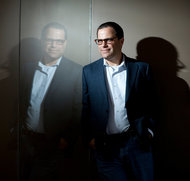 How much longer until the medical community wakes up to the many medical and economical benefits of prevention? For now, this shortened interview in the NYTimes with Dana Goldman might offer a ray of hope. Goldman, director of the Schaeffer Center for Health Policy and Economics at the University of Southern California and founding editor of the Forum for Health Economics and Policy, makes the point that “if we reimbursed on the basis of preventing disease rather than treating it, the world would be different.” How much longer until the medical community wakes up to the many medical and economical benefits of prevention? For now, this shortened interview in the NYTimes with Dana Goldman might offer a ray of hope. Goldman, director of the Schaeffer Center for Health Policy and Economics at the University of Southern California and founding editor of the Forum for Health Economics and Policy, makes the point that “if we reimbursed on the basis of preventing disease rather than treating it, the world would be different.”
In talking more about prevention, he adds “We should invest where we make our highest returns. We should put our money wherever there is a very high positive return, and where there isnât a high positive return, we should think hard about investing.” As it is now, our current system should be more aptly referred to as Disease care, not Health care.
Feel your best: well-being, mindfulness, piece of mind, and awareness are aided by regular Jin Shin Jyutsu and/or therapeutic massage sessions!
 This is the recommendation of a recent broadcast of Fresh Air on NPR – and I’ve been saying this to my clients for quite some time, especially those of you who sit at a computer all day. New York Times Phys Ed columnist Gretchen Reynolds details some of the surprisingly simple ways you can combat the effects of a sedentary lifestyle in her new book, The First 20 Minutes. This is the recommendation of a recent broadcast of Fresh Air on NPR – and I’ve been saying this to my clients for quite some time, especially those of you who sit at a computer all day. New York Times Phys Ed columnist Gretchen Reynolds details some of the surprisingly simple ways you can combat the effects of a sedentary lifestyle in her new book, The First 20 Minutes.
Reynolds recommends standing for two minutes every 20 minutes while desk-bound â even if you can’t move around your office. (I remember my wife setting herself a recurring reminder in Outlook to do just that, years ago.) “That sounds so simple,” she tells Fresh Air‘s Terry Gross. “But that actually has profound consequences.
“Sitting for long periods of time â when you don’t stand up, don’t move at all â tends to cause changes physiologically within your muscles,” says Reynolds. “You stop breaking up fat in your bloodstream, you start getting accumulations of fat … in your liver, your heart and your brain. You get sleepy. You gain weight. You basically are much less healthy than if you’re moving.”
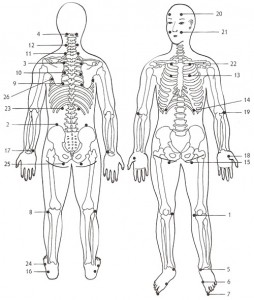 Even though this pilot study is from back in 2000, and probably not up to the standards for medical studies, I think the results are very interesting. The patients at Morristown Memorial Hospital all seemed to like the treatments (78% said they were helpful to them), felt different, and were comfortable with their practitioner, but were less interested in continuing treatment, or learning Jin Shin Jyutsu self-help after being released from the hospital. However, a full 85% would “recommend this treatment to others!” Even though this pilot study is from back in 2000, and probably not up to the standards for medical studies, I think the results are very interesting. The patients at Morristown Memorial Hospital all seemed to like the treatments (78% said they were helpful to them), felt different, and were comfortable with their practitioner, but were less interested in continuing treatment, or learning Jin Shin Jyutsu self-help after being released from the hospital. However, a full 85% would “recommend this treatment to others!”
One can only speculate why this is. Maybe it has to do with a general sense of powerlessness around the care provided during their hospital stay, which is not uncommon. It would be very helpful to conduct more studies, however, they cost a lot of money. Since many of these programs are funded by grants, providing treatments is usually prioritized over conducting studies.
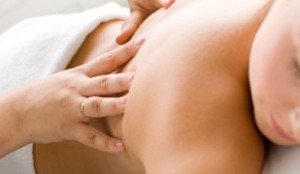 And yet another recent articler about the benefits of massage, this time from the Huffington Post: And yet another recent articler about the benefits of massage, this time from the Huffington Post:
A new study published in Science Translational Medicine found that a short, 10-minute Swedish-style massage session can reduce inflammation, which can help your muscles recover after a hard workout.
“What massage seems to do is … it reduces the inflammatory response as a function of the damage you incurred while you’re exercising,” explained one of the study’s authors Simon Melov, a molecular biologist at the Buck Institute for Research on Aging.
 
The classic The Touch of Healing is still one of the best books for anyone interested in Jin Shin Jyutsu, and I highly recommend it.
The authors explain the natural life force that runs through the body and demonstrate with case studies, detailed analysis, and more than 30 illustrations, how to integrate this system into one’s life. The key healing points and body flows, known as “Safety Energy Locks,” are presented with step-by-step instructions on how to utilize them for healing and greater self-awareness. Many self-help practices are also offered that address a wide array of common ailments, including headaches, digestive disorders, fatigue, depression, and arthritis along with prescriptive exercises for relief of emotional ailments such as loss of confidence, anxiety, and depression.
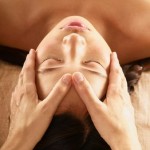 This recent article in the WSJÂ cites research which over the past couple of years has found that massage therapy boosts immune function, helps with back pain, as well as a variety of other tangible health benefits: This recent article in the WSJÂ cites research which over the past couple of years has found that massage therapy boosts immune function, helps with back pain, as well as a variety of other tangible health benefits:
- A 10-minute massage upped mitochondria production, and reduced proteins associated with inflammation in muscles that had been exercised to exhaustion, a small study last month found.
- A full-body massage boosted immune function and lowered heart rate and blood pressure in women with breast cancer undergoing radiation treatment, a 2009 study of 30 participants found.
- Children given 20-minute massages by their parents every night for five weeks plus standard asthma treatment had significantly improved lung function compared with those in standard care, a 2011 study of 60 children found.
The title of the article: “Don’t Call It Pampering: Massage Wants to Be Medicine.”
|
|
|
|
 This new study is exciting news for the Jin Shin Jyutsu community, in that it is part of the trend of increasing acceptance of JSJ in the clinical field. The Kentucky Markey Center (Lexington, KY), which published the study, alongside with the Memorial Hospital (Morristown, NJ), the California Pacific Medical Center (San Francisco, CA) , and the Kaiser Permanente Northwest Center for Health Research (Portland, OR), are all hospitals and facilities who have integrated Jin Shin Jyutsu into their cancer care programs.
This new study is exciting news for the Jin Shin Jyutsu community, in that it is part of the trend of increasing acceptance of JSJ in the clinical field. The Kentucky Markey Center (Lexington, KY), which published the study, alongside with the Memorial Hospital (Morristown, NJ), the California Pacific Medical Center (San Francisco, CA) , and the Kaiser Permanente Northwest Center for Health Research (Portland, OR), are all hospitals and facilities who have integrated Jin Shin Jyutsu into their cancer care programs.![[Home]](http://www.feelintegrated.com/images/logo.gif)
 For any of us who still believe that humans can keep themselves separate from nature (or the universe) and the consequences that follow, the recent publication of the gene map of the body’s microbes may help to open your mind. Apparently, non-human microorganisms outnumber our own cells by a factor of 10 to 1! Here’s a brief summary of the
For any of us who still believe that humans can keep themselves separate from nature (or the universe) and the consequences that follow, the recent publication of the gene map of the body’s microbes may help to open your mind. Apparently, non-human microorganisms outnumber our own cells by a factor of 10 to 1! Here’s a brief summary of the 

 How much longer until the medical community wakes up to the many medical and economical benefits of prevention? For now, this
How much longer until the medical community wakes up to the many medical and economical benefits of prevention? For now, this  This is the recommendation of a
This is the recommendation of a 



